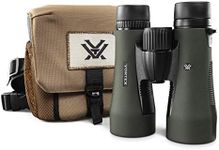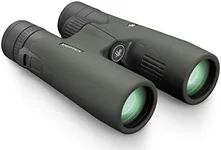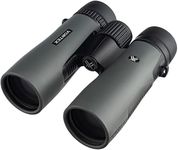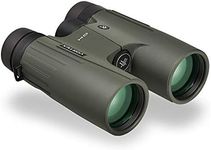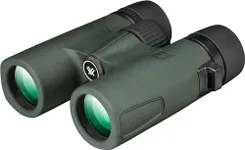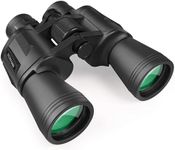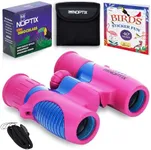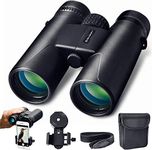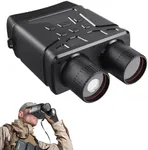Buying Guide for the Best Vortex Binoculars
Choosing the right pair of vortex binoculars can greatly enhance your outdoor experiences, whether you're bird watching, hunting, or simply enjoying nature. The key to finding the best fit for you is understanding the various specifications and how they align with your specific needs. Here are the main specs to consider and how to navigate them.MagnificationMagnification indicates how many times closer an object will appear compared to the naked eye. This is important because it determines how much detail you can see. Binoculars typically range from 8x to 12x magnification. Lower magnification (8x) offers a wider field of view and is easier to stabilize, making it ideal for bird watching and general use. Higher magnification (10x-12x) provides more detail but can be harder to keep steady and may have a narrower field of view, which is better for long-distance viewing like hunting.
Objective Lens DiameterThe objective lens diameter, measured in millimeters, affects the amount of light that enters the binoculars, impacting image brightness and clarity. Larger diameters (42mm-50mm) are great for low-light conditions like dawn or dusk but can make the binoculars heavier. Smaller diameters (25mm-35mm) are more compact and lightweight, suitable for daytime use and portability. Choose based on when and where you'll be using the binoculars most often.
Field of ViewField of view (FOV) is the width of the area visible through the binoculars, usually measured in feet at 1,000 yards. A wider FOV allows you to see more of the scene, which is beneficial for tracking moving objects like birds or wildlife. Binoculars with a FOV of 300-400 feet are considered wide and are ideal for general use. Narrower FOVs are more suited for detailed observation of stationary objects.
Eye ReliefEye relief is the distance from the eyepiece to your eye while still seeing the full field of view. This is crucial for comfort, especially if you wear glasses. Longer eye relief (15mm-20mm) is better for eyeglass wearers, ensuring they can see the entire image without straining. Shorter eye relief (10mm-14mm) might be sufficient for those without glasses. Consider your comfort and whether you wear glasses when choosing.
Weight and SizeThe weight and size of binoculars can affect how comfortable they are to carry and use for extended periods. Heavier binoculars (over 30 ounces) might offer better stability and durability but can be tiring to hold. Lighter models (under 20 ounces) are easier to carry and handle, making them ideal for long hikes or travel. Think about how long you'll be using them and how much weight you're comfortable carrying.
Waterproof and FogproofWaterproof and fogproof features ensure that your binoculars can withstand harsh weather conditions and sudden temperature changes without getting damaged or fogging up. This is particularly important for outdoor activities like bird watching, hunting, or hiking in varying climates. Look for binoculars with O-ring seals and nitrogen or argon purging for reliable performance in wet or humid environments.
Prism TypeBinoculars use either roof prisms or porro prisms to correct the orientation of the image. Roof prism binoculars are more compact and durable, making them a good choice for rugged outdoor use. Porro prism binoculars often provide better depth perception and a wider field of view but are bulkier. Choose roof prisms for portability and durability, and porro prisms if image quality and depth perception are your priorities.
